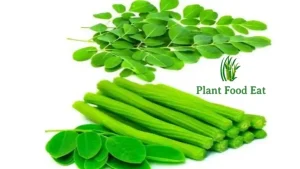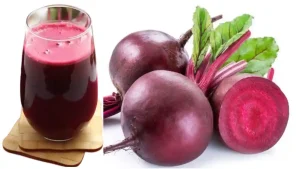Fenugreek leaves benefits for skin are one of the commonly used green leafy vegetables in Indian kitchen. It is a multipurpose plant, which is used in medicinal, culinary and agricultural purposes. Its scientific name ise Trigonella foenum-graecum. It have a strong aroma and bitter taste, but are full of medicinal properties. Also kasuri methi is made by drying fenugreek leaves.
It is also used as a herb in most parts of the world. Kasuri methi is used as a spice for cooking. Its use in cooking enhances the taste of food. Fenugreek leaves are also called nutritional supplement for our body. Since it provide immense benefits for the body and health. It is very important to know everything about the benefits and disadvantages of Fenugreek leaves.
Read Related:- Jasmine oil benefits
What is Fenugreek leaves
Fenugreek leaves are a famous green vegetable. Which holds a special place in the Indian kitchen. They are also known as ‘fenugreek leaves’. It is slightly bitter in taste, but they have many medicinal properties. These leaves are rich in iron, fiber, calcium, vitamins A, C and K, which are beneficial for health.
It is used in vegetables, parathas, theplas, dal or soups. They strengthen the digestive system and are considered very beneficial for diabetes patients. Its consumption keeps cholesterol under control and also reduces skin problems.
Fenugreek leaves are especially eaten in winters as they provide warmth to the body. Its regular consumption also increases the body’s immunity. Overall, it is a nutritious and tasty green vegetable which is extremely beneficial for health.
Types of Fenugreek leaves benefits for skin
There are mainly three types of fenugreek leaves benefits for skin available.
Green Fenugreek:- It is used in the form of fresh leaves and added to vegetables.
Kasuri methi:- It is dried fenugreek leaves, which are used as a spice.
Sprouted Fenugreek:- The seeds are sprouted and used in breakfast, which is healthy.
Nutrients of Fenugreek leaves
Nutrients of Fenugreek Leaves Per 100 grams.
- Energy 49 kcal
- Protein 4.4 grams
- Carbohydrates 6 grams
- Fiber 1.1 grams
- Calcium 395 mg
- Iron 1.9 mg
- Vitamin C 220 mg
- Phosphorus 51 mg
- Vitamin A 750 IU
Iron, calcium and fiber present in fenugreek leaves are extremely beneficial for the body.
Fenugreek Leaves benefits for skin
Fenugreek leaves benefits for skin is used in almost every Indian household. It enhance the taste of food and to get rid of other health problems. So let’s know how Fenugreek leaves is beneficial for our health.
Keeps the heart healthy
Fenugreek helps in improving your heart health, as it contains a good amount of potassium and selenium. Therefore, consume fenugreek as much as possible in winter. It is helpful in reducing bad cholesterol in your body. The lipoprotein (LDL) present in it helps in reducing cholesterol levels and keeps you away from heart diseases.
Apart from this, green fenugreek contains galactomannan, which is good for healthy heart health. Fenugreek also helps in keeping your blood circulation better, which also reduces the risk of artery blockage. Because when your blood circulation is better, your heart also works properly.
Beneficial for diabetes patients
You are probably unaware of how beneficial fenugreek is for diabetes patients. Fenugreek seeds or fenugreek vegetable are both beneficial for diabetes patients. For this, soak fenugreek seeds in water at night and make tea from the same water in the morning. And drink 1 cup daily, this will help you control blood sugar. This will also keep your weight under control and the amino acid present in it will help in increasing insulin production.
Improve digestion with Fenugreek leaves benefits for skin
Fenugreek leaves benefits for skin is also considered helpful in promoting your digestive health. It removes the problem of constipation, indigestion and stomach ache. If you consume fenugreek seed tea or fenugreek vegetable daily, then your digestive process will remain healthy. And your stomach will remain clean.
Beneficial in joint and bone pain
Green vegetables are rich in many nutrients, which help us to fight and cure many diseases. Similarly, fenugreek is also beneficial for your joint pain, bone pain, arthritis or osteoporosis etc. Because fenugreek is rich in calcium, magnesium, iron and phosphorus.
Boost immunity with Fenugreek leaves benefits for skin
Fenugreek helps strengthen your immune system and boost immunity. As fenugreek contains many vitamins and minerals. It is rich in potassium, calcium, iron, copper, selenium, zinc, manganese and magnesium. As well as protein and fibre. This makes it helpful in fighting diseases and boost immunity. So, you can enjoy fenugreek tea, fenugreek parathas, vegetables or greens in winters.
Useful in obesity
Fenugreek leaves benefits for skin conditions high amount of fiber, it keeps the stomach full for a long time. Which reduces the tendency to overeat. And remove your obesity.
Beneficial in constipation
Boil a cup of fenugreek leaves in enough water for five minutes. You do not need to strain it. Let it cool and add a little honey to it. Consume this mixture twice a day to get rid of constipation.
Increase breast milk
Breastfeeding is one of the basic needs of a newborn. So you must ensure that you are able to provide your baby with the required amount. Doctors recommend nursing mothers to consume this leaf on a daily basis. The immense use of this spice is due to the presence of diosgenin which aids in the production of breast milk. It is one of the top 10 foods that can aid with breast milk production.
Reduce cholesterol
Regular consumption of fenugreek reduces LDL (bad cholesterol) and increases HDL (good cholesterol). Keeps the heart healthy The potassium and fiber present in fenugreek improve heart health. It also helps in controlling high blood pressure.
Relief during periods
Consumption of fenugreek leaves provides relief from menstrual irregularities and pain. The compounds present in it help in maintaining hormonal balance.
Recovery after delivery
Fenugreek leaves are helpful in giving strength to women after delivery, increasing milk and cleaning the uterus. It contains galactagogues, which help in increasing the amount of milk.
Glowing skin with Fenugreek leaves benefits for skin
It brings glow to the skin. Applying a paste of fenugreek leaves benefits for skin on the face reduces acne and brightens the skin.
Prevent hair fall with Fenugreek leaves benefits for skin
Grinding fenugreek and applying them to the hair stops hair fall and also reduces dandruff. Makes hair long and thick The protein and nicotinic acid present in fenugreek strengthen the hair and increase their growth.
Improves eye sight
Improves eyesight due to the abundance of vitamin A, it sharpens eyesight and removes problems like night blindness.
Removes fatigue and weakness
Fenugreek leaves benefits for skin contain iron. Which removes anemia and increases energy in the body.
Uses of Fenugreek leaves
Usually fenugreek seeds are used for seasoning food and for making vegetables or pickles. But we wait for green fenugreek leaves throughout the year because they are available only during the winter season. Many types of recipes can be made from it. You can include them in everything from breakfast to dinner. Let us tell you that properties like potassium, iron, vitamin K, sodium, dietary fiber, calcium, phosphorus are found in fenugreek leaves. Which can help protect the body from many problems.
Culinary uses
Fenugreek uses in Paratha Fenugreek Puri Fenugreek Muthia (Gujarati cuisine). Fenugreek Pakodas, gravy and curry. Also Adding it in pickles.
Medicinal uses
Fenugreek juice is beneficial for diabetes patients. Paste of fenugreek leaves is applied in skin diseases. Drinking fenugreek tea is beneficial in gas and indigestion.
Fenugreek cultivation
Climate and sowing:- Fenugreek is a winter crop and is sown in October-November. Sandy-loam soil with good drainage is suitable for it. 20-25 kg seeds per hectare is sufficient. Sowing is done in rows at a distance of 30 cm.
Irrigation and care:- First irrigation is necessary after germination. Later irrigation is done at an interval of 15-20 days. First harvesting of leaves is done 25-30 days after sowing. Up to 80-100 quintals of green leaves are obtained in one hectare.
How to use Fenugreek leaves
Consuming fenugreek leaves benefits for skin In raw form as mixed in salad, cooked In paratha, vegetable, soup etc. By making soup or decoction. Especially in winter. Dry form Kasuri Methi To enhance the taste.
Potential side effects
Although fenugreek leaves are generally safe. Excessive consumption may cause some side effects.
- Some people may be allergic to it. So before using it, apply its paste on the skin and check whether you are allergic to it or not.
- Its excessive consumption during pregnancy can cause miscarriage. So, consult your doctor once before consuming it.
- If you are taking any kind of medicine, then consult your doctor once about its consumption.
- Excessive consumption may cause gas and diarrhea.
- Pregnant women should avoid excessive consumption.
- Thyroid patients should consume cautiously.
- May lower sugar levels
- diabetics should consult a doctor.
Home remedies
Applying fenugreek paste on the face reduces acne. Drinking fenugreek leaf juice increases blood in the body. Applying a paste of fenugreek and turmeric relieves joint pain. Consumption of fenugreek removes physical weakness and fatigue.
Culture and tradition
Fenugreek has been mentioned in Ayurveda and Unani systems of medicine. Consumption of fenugreek during fasts and festivals is considered healthy. Fenugreek is a staple winter diet in many states of India. Fenugreek leaves are not just an ordinary leafy vegetable, but it is an important herb used in Ayurvedic medicines. Regularly including fenugreek in your diet helps prevent several diseases and provides overall health benefits.
Recipe fenugreek leaves kadhi
Ingredients-:
- Fenugreek leaves – 125 grams
- Curd – 1 ½ cup (300 grams) whipped
- Gram flour – ½ cup (60 grams)
- Oil – 2-3 tablespoons
- Asafoetida – 1 pinch
- Cumin seeds – 1 teaspoon
- Turmeric – ¼ teaspoon
- Red chili powder – ½ teaspoon
- Whole red chili – 1
- Green chili – 1 (finely chopped)
- Ginger – 1 teaspoon (paste)
- Salt – 1 teaspoon or according to taste
- Curry leaves – 10-12 (if you want)
Method-:
Pluck the leaves from the fenugreek and wash them twice with clean water. Keep them in a plate diagonally so that all the water from the fenugreek leaves drain out. Chop the washed leaves finely and keep them ready.
Now heat oil in a pan. When the oil is hot, add ½ teaspoon cumin seeds and asafoetida and fry them. After roasting the cumin seeds, add turmeric powder, finely chopped green chillies, ginger paste and fry the spices lightly. After the spices are roasted, add finely chopped fenugreek, add 1 cup water and mix, cover and let it cook for 5-7 minutes and stir once in between. Cook the fenugreek till it becomes soft.
Take curd in a bowl and add gram flour to it and mix it well. Dissolve gram flour in curd till the lumps disappear, now add 3.5 cups of water and mix it.
Fenugreek has become soft, add the gram flour curd solution. And cook by stirring continuously with a spoon till the solution boils well. By doing this the curry will not split and will be prepared well.
Add red chilli powder to the curry and mix it. When the kadhi starts boiling, add salt to it and let it cook on medium flame for 12-15 minutes. Keep stirring the kadhi every 2 to 3 minutes. Now Fenugreek leaves kadhi is ready. Turn off the gas and take out the kadhi in a bowl.








Hi, this is a comment.
To get started with moderating, editing, and deleting comments, please visit the Comments screen in the dashboard.
Commenter avatars come from Gravatar.